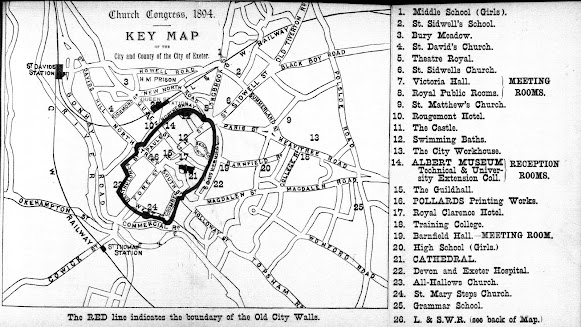WILLIAM POLLARD
During the Victorian era and into the early 20th century the business
grew substantially under the leadership of William Pollard (son of William
Carss) and then his son, Herbert Pollard. They outgrew the premises on North Street and in 1919 opened an
impressive new factory at Bampfylde Street. The depression of the 1930s
was very tough and during the Second World War trading virtually ceased. On the
4th of May 1942 the factory was completely destroyed in the Exeter Blitz. The
company’s insurers would not fully cover the claim and after the war the
company had to be rebuilt largely from scratch. The company was gradually rebuilt
through the 1950s and 60s. When the country’s largest manufacturers of
weighbridges, Avery and Weightron, were frustrated with the quality of tickets supplied for their
machines the Pollard company created a specialised production centre to focus
on this market and remain the undisputed market leader of weighbridge tickets
today.[1]
Although the cover title to the work below is Pollard’s Official History and Guide to Exeter it is clear from both the map itself and the paragraph of comments on the reverse of the map that this booklet was produced in anticipation of the visit of the Church Congress which took place in October 1894.
Size: 170 x 213. No
Scale.
Church Congress, 1894. KEY MAP OF THE City and County of the City of Exeter. (Ce). A simple plan of Exeter with the old city wall line marked red with note to that effect below the map. There is a panel outside the right border (forming the third of three folding leaves) with a key to buildings numbered on the plan. No signature or imprint. The right panel on reverse has information for those attending the congress on rail tickets.
1. 1894 Pollard’s Official Guide to Exeter ......
[1] Taken from the Pollard
website at: http://pollardsprint.co.uk/history.html.





No comments:
Post a Comment